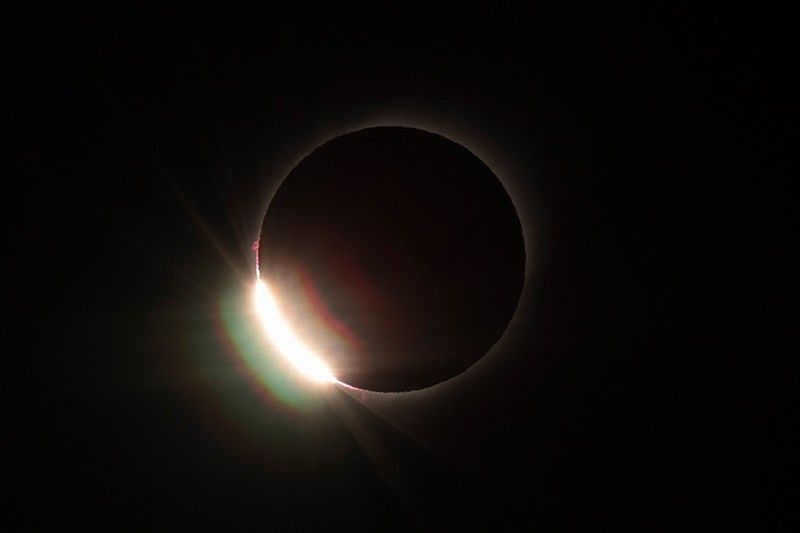Total solar eclipse on April 8: What you need to know

MANILA, Philippines — On April 8, millions of people in the United States, Canada, and Mexico will witness a total solar eclipse, leading to people dubbing it "The Great North American Eclipse."
Online publication Space.com defines a total solar eclipse as the phenomenon when a new moon is positioned exactly between the Earth and the sun, making it cast its shadow on Earth, making it appear dark during the daytime.
With the moon appearing in the sky the same size or slightly larger than sun and covering its disk, viewers will get a better glimpse of the sun's outer atmosphere or the corona.
The April 8 eclipse will cover the sun's disk entirely as it makes its way across Mexico, the eastern half of the United States, and through Newfoundland in Canada.
Those not in the eclipse's path will still see the phenomemon happen but only as a partial solar eclipse.
During the totality, the planet Venus is expected to be very bright in the sky, while Jupiter will also make an appearance.
It is advised to wear solar filters to safely view the eclipse, and the same must be applied on the lenses of cameras, telescopes, and binoculars.
"Only those in the path of totality will briefly be able to remove them to see the Sun's corona with their naked eyes," said Space.com. "Those not in the path of totality must keep them on the entire time."
An estimated 32 million people live inside the "path of totality" — under which the moon will fully block out the sun — with an additional 150 million residing less than 320 kilometers from the strip.
Near the US-Canada border in Burlington, Vermont, which is set to experience the totality just before 3:30 p.m. (1930 GMT), many hotels have been sold out for months.
The few remaining rooms, which typically go for around $150 (P8,460) a night, show online prices of $600-$700 (P33,800-P39,500) for the night of the eclipse.
The Perryman Group, a Texas-based research firm, estimated the direct and indirect economic impacts of this year's eclipse could reach $6 billion (P338 billion).
Scientists have traditionally used the eclipses to observe the solar corona, an outer layer of plasma that's difficult to study due to the sun's bright light, Margot said.
New tools such as the space-based Parker Solar Probe have made such research less eclipse-dependent, but scientists will still be taking full advantage.
The United States' National Aeronautics and Space Administration (NASA) recently highlighted several studies being planned for the eclipse, from effects on Earth's atmosphere and animal behavior, to even human psychology.
"Eclipses have a special power," NASA Administrator Bill Nelson said recently. "They move people to feel a kind of reverence for the beauty of our universe."
After the April 8 eclipse, the next total solar eclipse will happen on August 12, 2026, where totality will be visible from across the Atlantic Ocean, Greenland, Iceland, and Spain. — with reports from Daniel Stublen for Agence France-Presse





















